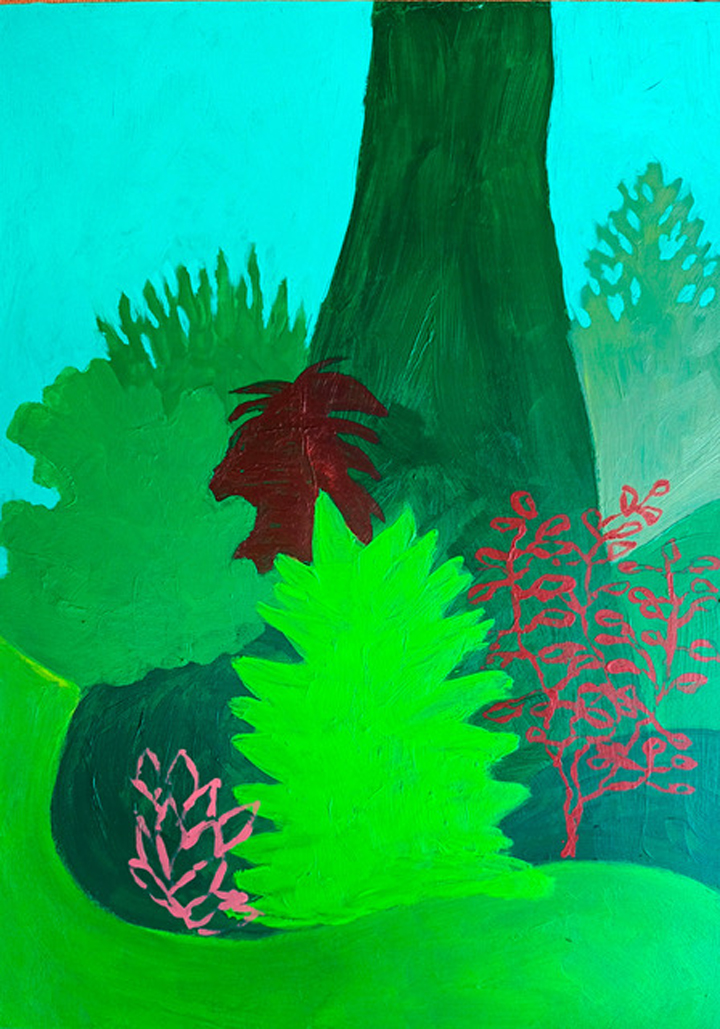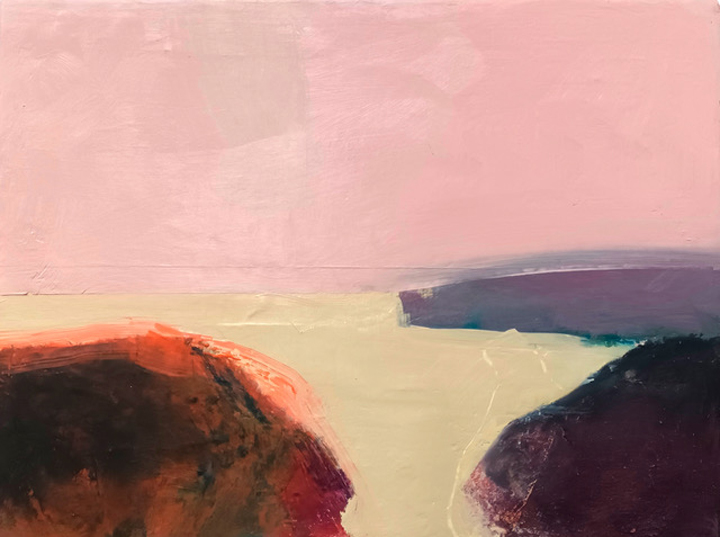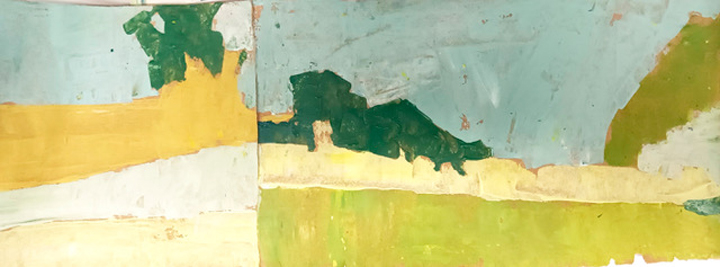From Truth to Abstraction in Mixed Media
Monday 5th August 2024 for 5 days — Cost: £300
Tutor: Jane Strother
Bookings for this course have now ended
The course is about exploring and developing a process in which a view of reality, be it a still life or photograph, can be encompassed in one’s reflections on the subject: less about the concrete, the technique, or reproducing the facts as they are laid out in front of you, but about what you can do with these.
What will you do?
You will work from life and your own photos or drawings using a range of drawing and painting media on exercises and studies, developed to support you find an essence, for you, within your subject.
You will need plenty of resource material. If you choose landscape, collect a number of images depicting your subject, observed or photographed at different times of day or in different weathers.
Print some of these on A4, colour or greyscale. You will also need objects for still life. More comprehensive information on materials and equipment tbc but for now, your will need charcoal, acrylics and other drawing materials. Bring what you can. Suitable for intermediate and advanced students
Resources and reference materials
You will need plenty of resource material. If you choose landscape, collect a number of images depicting your subject, observed or photographed at different times of day or in different weathers. Print some of these on A4, colour or greyscale.
Preparation
In advance of the course, I would like you to do the following. We will work from these on the first day.
Make 12 – 15 drawings from the same point in your subject area. By this, I mean that you can move around but keep to the same piece of coast or hillside, for example, if in the landscape. You can also turn to view different directions.
If using your garden, try drawing from your doorway, or through your doorway, from the shed or from the upstairs window – whatever appeals.
Some drawings can be very quick and simple, others longer with more detail. They do not have to be the best drawings you have ever made! Work on smallish paper, around A5 to A6. (You will be sticking them all up on a board or laying them out on the table and need to see them all) Use any drawing materials.
Use the following suggestions as a guide:
- Make a drawing in bright weather
- In dull or dark conditions
- Looking specifically at foreground and further away
- Use line
- Use shading
- With or without detail
- etc!
Materials
You will need a range of materials as we will be collaging, drawing and painting, cutting up, tracing, taping together. You do not necessarily need everything.
Drawing
- Charcoal – compressed and willow, graphite stick, pencils, drawing inks, chalk pastels, oil pastels, pastel pencils, biro, fibre tipped pens
- Paper towel or rags, rubber – ideally not a putty one, twigs cut from garden to use with inks, dip pen
- Drawing board at least A2 if at all possible. Something smaller to lean on for moving around the room
- Drawing paper –fairly light weight paper, 100g or 120g is fine for quick sketches. It is preferable to have a larger pad which can be cut down if necessary. That way you can use sheets of differing scales and sizes. You’ll need plenty. For a longer drawing, 200g plus is nice to use, you’ll need A2 or larger Also, a sheaf of very light paper – printer paper is fine
- Small scraps of black paper (very little)
- Masking tape, scissors, tracing paper
- Pritt stick or similar. Later on you will need some glue to stick down collaged painted paper. The acrylic medium (see painting) is good for this or some pva white glue
Painting Materials
Acrylics are best or gouache but please do not bring watercolour for finished work. You can use this for sketching though.
Water soluble oils with water or vegetable oil to clean up can be used, but you MUST be in charge of your cleaning process. The sinks are not art room sinks and should be left clean at the end of the day. All excess paint whether acrylic or oil should be scraped into paper and put in the bin, not washed down the sink.
No solvents.
Acrylic paints. The basic range requires the primary colours 2 x yellow, blue and red. For example:-
- Cadmium yellow, lemon yellow
- Cyan blue or a blue turquoise, cobalt or ultramarine
- Crimson or magenta, cadmium red
- White
- Other ‘made up’ tubes of your choice which may include earth colours and one of two specific hues. Acrylic medium matte or gloss basic medium
Collage materials
Begin collecting bits of paper you might like to use, anything you come across. Also, please bring some sheets of A4 printer paper or similar – cheap, thin, white paper which we will paint.
Paper
Its best to have a large pad so you can cut smaller or use large. You will need the thin printer paper I have mentioned and also something that will do for both painting and drawing. You might like to work on a canvas or board later in the week or use a heavier paper. The quality and weight of paper is really not too crucial for the work we will be doing. It is nice to work on quality stuff but it can also be inhibiting!
In addition
- Rubber
- Craft knife or scissors
- Pencil sharpener
- Different sized brushes for painting
- Glue
- Masking tape
- Water containers
- Kitchen roll or blue roll for cleaning up
- Palette, the larger and flatter the better (can be taped down plastic sheet or shiny paper)
- Palette knifes
Optional
- Tracing paper
- Easel is good to have. I can lend 4 or 5 metal ones
- Large drawing board as large as possible. Piece of plywood? Bring if at all possible
- This might be for working on and for propping up with drawings stuck to it, for reference


